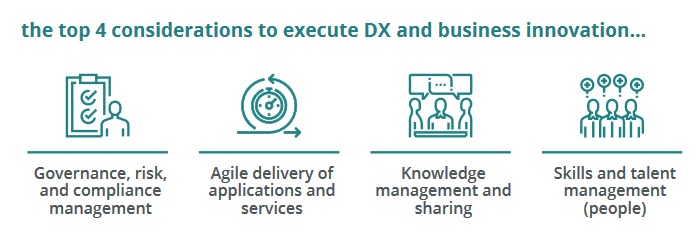Of those surveyed, 96% of organizations have a digital transformation strategy, with 57% approaching it as an enterprise-wide priority, according to IDC’s Aligning IT Strategies and Business Expectations for Digital Transformation Success, sponsored by EasyVista.
The report found that digital transformation strategies are based on 4 priorities:
1. Governance, risk, and compliance management
2. Knowledge management and sharing
3. Agile delivery of applications and services
4. Skills and talent management

Furthermore, the report shows that modernizing the IT experience is at the core of digital transformation, as 88% of organizations view IT as an essential part of their forward-thinking digital innovation strategy.
But the study also found that fewer than 6% of organizations have core IT embedded in digital innovation (IT and applications management is smooth, modern, optimized, and automated only for these handful of orgs). Three quarters admit that IT needs to get closer to the business and “develop skills in business strategy.” According to the study, two of the key challenges for successful transformation of the business are providing engaging user experiences and the lack of skills and talent.
Employee experience, the ability to make ITSM processes more agile, reduction of service delivery and support costs, and improved best practices for governance, security, and compliance are areas where we have seen impeding digital transformation progress in the past. These findings reiterate the emphasis businesses are putting behind improving these areas by having the best ITSM systems for the future.
Stemming from the four key priorities, the report shares seven recommendations to think about when investing in ITSM to drive digital transformation:
■ Tie ITSM projects tightly to business goals
■ Assess ITSM processes for maturity and automation
■ Increase focus on modernizing employee and customer experiences
■ Invest in an ITSM platform that supports a journey toward higher levels of maturity and advanced automation
■ Maintain agility and flexibility for advanced IT business models
■ Focus on effective curation and delivery of enterprise knowledge
■ Evaluate ITSM vendors that are committed to innovation and meet your business needs
Methodology: IDC surveyed 300 companies across the US and France on a range of subjects related to generating digital transformation and the increased need to modernize IT services.

